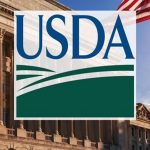
A 10-month-old baby in Tennessee developed a life-threatening condition last year and spent 27 days in the hospital with failing kidneys after drinking raw milk from a cow-share, health officials in Tennessee reported Thursday.
At least five people were sickened by raw milk from the cow-share, including another 10-month-old baby who was hospitalized for a day.
The direct sale of raw milk is illegal in Tennessee due to the danger that the unpasteurized dairy product can easily contain deadly pathogens shed from cattle. Yet people get around the law via cow- or herd-shares, in which they purchase a share of an animal or herd and can use milk from the animals for personal use.
In this case, the cow-share served 125 households scattered in Georgia, North Carolina, and Tennessee. The two severely ill infants were not among them—their families obtained the raw milk second-hand from cow-share participants.
After reports of the two sickened babies, state health officials opened an outbreak investigation and contacted the farm—which wasn’t easy. The farm was in a rural area and did not have a phone or electricity. Health investigators had to go there in person to inform the owners of the investigation before returning for the environmental assessment. Once they did, they identified “possible routes of fecal contamination during milking” and unsafe milk storage temperatures.
Instead of refrigerating the potentially contaminated raw milk, the farm kept it cool using “mechanical circulation of cool spring water” and coolers filled with ice. This did not keep the milk at the recommended temperature of 4°C (40°F) or lower. Samples taken from the farm revealed a Shiga toxin-producing Escherichia coli (STEC) that genetically matched the strains found in one of the sickened infants.
Outbreak risk
The farm gave the investigators a list of the 125 cow-share participants. But the investigators could only get phone numbers for 109 of them, and of those, they could only reach 50 (40 percent of participants). That contact effort helped identify an additional three cases in one household. Those three cases did not require hospitalization like the cases of the two infants.
One of the sickened infants, the one who nearly died, developed hemolytic uremic syndrome (HUS) from the bacterial infection, which is most common in young children. HUS is marked by the destruction of red blood cells, inflammation of blood vessels, and kidney damage, which can progress to high blood pressure, seizures, blood-clotting problems, kidney failure, coma, and death. The infant required hemodialysis during the one-month hospital stay but thankfully recovered.
Such outbreaks with raw milk are relatively common. While outbreaks with pasteurized milk occasionally occur, the risk of an outbreak is about 150 times higher with raw milk than with pasteurized milk, the Centers for Disease Control and Prevention estimates. And the hospitalization rate is 13 times higher in outbreaks linked to raw milk than in pasteurized milk, which tends to involve mild viruses or toxins.
Nevertheless, Tennessee health officials reported that the farm at the center of the outbreak planned to keep producing raw milk. And there’s little the state can do about it. The health officials sent educational letters to the cow-share participants and asked the University of Tennessee Extension’s Agriculture and Natural Resources Team to visit the farm and review best milking practices with the owner.
“Increasing awareness of inherent health risks of raw milk products in Tennessee could prevent further morbidity,” the officials concluded.

























